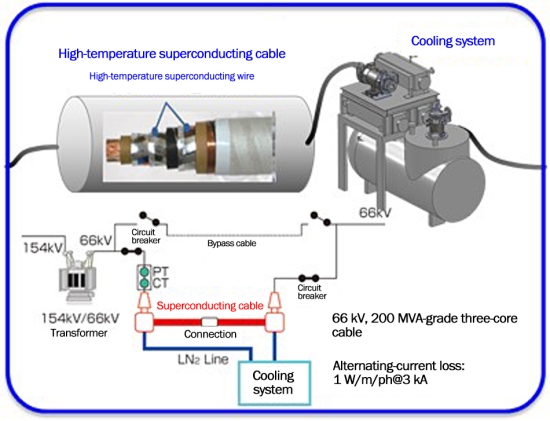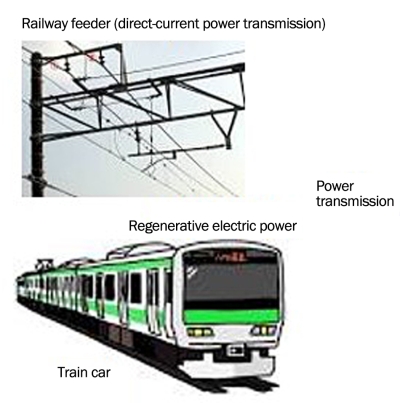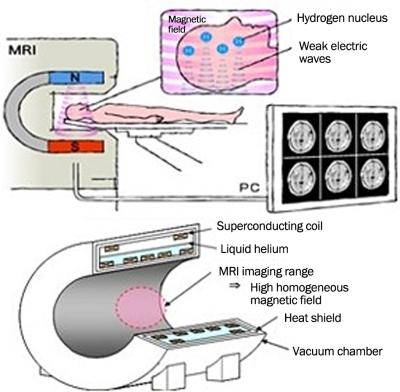Project to Promote Commercialization of High-Temperature Superconductivity Technology
Project overview
PL: OKADA Michiya (Supervisory Innovation Coordinator, TIA Central Office, National Institute of Advanced Industrial Science and Technology)
In the future, in addition to increasing the percentage of power generation accounted for by renewable energy, it will be important to establish power transmission technology that makes it possible to transmit electricity from decentralized power plants to centralized cities without loss as well as to increase rail transport capacity without drops in voltage. Superconductivity technology—which can be used to generate high currents and magnetic fields and therefore transmit electricity without loss—is expected to help address the above problems. Meanwhile, a global shortage of helium occurred at the end of 2012. Because helium is a necessary refrigerant for achieving superconductivity, this shortage meant related equipment could not be operated. Therefore, it is urgent to develop applied superconductivity technology that does not require the use of liquid helium.
The goal of this project is to employ existing projects to comprehensively implement the development of both basic and demonstration technologies, starting with four themes at a stage near commercialization.
In the electric power field, it is necessary to establish power transmission technology that minimizes energy loss while transmitting power from decentralized power plants to centralized demand areas. Therefore, one goal of this project is to secure the safety performance essential for achieving the practical application of superconducting cable systems and formulate methods for recovering from accidents or failures. In addition, in the transportation sector, superconducting direct current power transmission technology will be demonstrated, and a draft of standards pertaining to design and construction methods as well as criteria for operation, maintenance, failure recovery, and other issues will be formulated. In the industrial sector, to achieve helium-less energy conservation and enhance competitiveness, high-temperature-superconductivity high-stability magnetic field system technology aimed at the application of superconductivity technology to the field of magnetic resonance imaging (MRI) will be developed. Furthermore, basic technology necessary for realizing products that apply superconductivity, such as technology for high-temperature superconducting wires aimed at improving the characteristics and reducing the costs of superconducting magnets, will be developed. Various implementation details will also be pursued in an effort to achieve practical application at an early stage.
-
 High-temperature superconducting cable system
High-temperature superconducting cable system -
 Application to railway feeders
Application to railway feeders
-
 Magnetic resonance imaging (MRI)
Magnetic resonance imaging (MRI)
Basic information
| Technical field |
|
Project code | P16006 |
|---|---|---|---|
| Department in charge |
|
||
